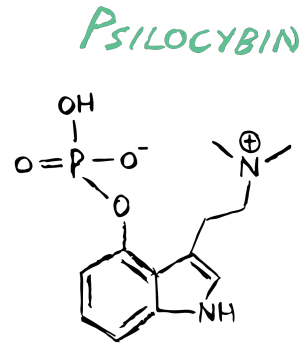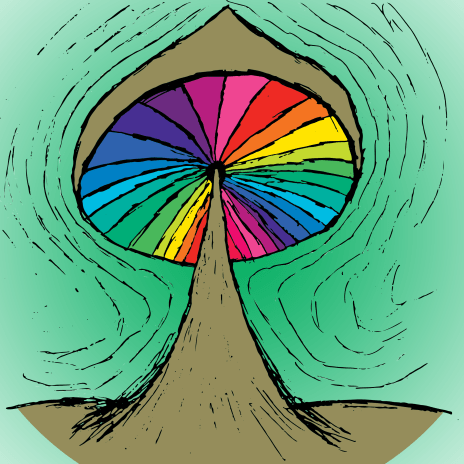Psilocybin is a naturally occurring psychedelic compound, found mainly in mushrooms of the Psilocybe genus. Psilocybin-containing mushrooms have been ingested, revered and cultivated in many ancient cultures, from Mesoamerican peoples 1 to aboriginal Australians 2.

The Tepantitla mural depicts pre-Aztec priests picking psilocybin mushrooms around the rain god Tlaloc.
Psilocybin, once ingested, is quickly metabolised to psilocin, that acts through specific serotonin receptors (5-HT2A) to induce various cognitive effects. Ingesting psilocybin results in a psychedelic experience lasting several hours, that may include anxiety, hallucinations, altered perception of time, mystical and spiritual experiences, and a loss of self or ‘ego death’.

There is no evidence of toxicity or long-term harm from psilocybin use, but as with all psychedelic drugs, it should be treated with respect. Its legality varies but in most places is considered a highly illegal drug.

Useful Links:
Blog posts about psilocybin on The Psychedelic Scientist
References
- Carod-Artal (2011) Hallucinogenic drugs in pre-Columbian Mesoamerican cultures. Neurologia 30:42-49
- Pettigrew (2011) Iconography in Bradshaw rock art: breaking the circularity. Clin Exp Optom 94(5): 403-417
- Nichols (2016) Psychedelics. Pharmacol Rev 68:264-355